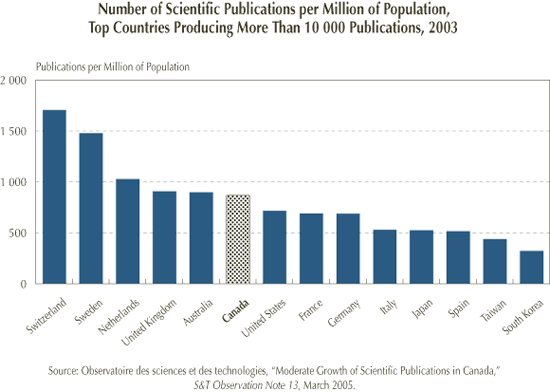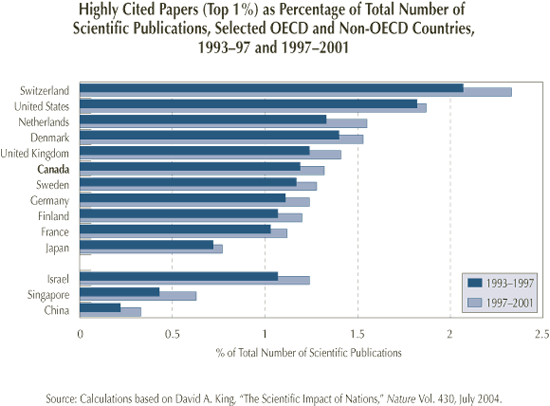![]()
Comercialización de la Ciencia: Riesgos y Contradicciones
Somos muchos los investigadores preocupados por los derroteros que está tomando la investigación científica bajo el imperio del neoliberalismo económico (ver nuestro post Ciencia y Neoliberalismo Económico). A la antigua presión por publicar cuantos más artículos mejor, en la revistas indexadas, que se inició a finales del siglo XX, se le suma actualmente una exigencia de inmediatez con vistas a que sus resultados de las investigaciones sean rápidamente asimilados por los tejidos industriales. Se trata pues de extraer beneficios económicos lo antes posible. Venimos defendiendo que la denominada Investigación Traslacional puede generar más perjuicios que beneficios. Paralelamente las Retrodemocracias propiciadas por la Escuela de Chicago también pretenden privatizar todo lo que encuentran a su paso y entre otras actividades la propia ciencia. Se trata de una ceguera de gran calado, como intentamos mostrar en nuestro post “Tecnologías de Primera y Segunda Generación (Un Riesgo Social en Ciernes)”. Las inversiones públicas a largo lazo son imprescindibles con vistas a lograr dar pasos de gigante en la investigación científica, a partir de los cuales se desarrollan las que denominamos tecnologías de primera generación. Ala postre, la industria saca provecho de las mismas al operacionalizarlas en tecnologías de segunda generación. Empero sin las primeras no pueden prosperar las segundas. Y en este tesitura anda la relación entre Ciencia y Neoliberalismo Económico. El 28 de mayo de 2012 la revista The Scientist publicaba un artículo en la cual un investigador canadiense se preguntaba preocupado varias preguntas sobre este tema que podréis leer abajo. Nadie en su sano juicio cuestiona que la ciencia no deba traducirse en prosperidad y bienestar ciudadano. Las cuestiones que realmente deben preocuparnos son otras: ¿Cómo?, ¿cuando? ¿Por qué y por quién?; ¿A que precio?, etc. Ahora bien, el mundo empresarial busca esencialmente beneficios económicos, relegando cualquier otro aspecto a su segundo plano. Sin embargo, a los investigadores se les coloca entre la espada y la pared, mediante con una serie de directrices que atentan contra los cánones de la indagación científica, a demás de ser contradictorias. Por un lado les impelen a publicar, por otro nuestras autoridades en un acto de hipocresía supina también “alegan desear” que los resultados de las indagaciones científicas sean públicas y de libre acceso a todos los ciudadanos. Sin embargo, también presionan para que los investigadores colaboremos con la industria firmando contratos que generalmente contienen clausulas de confidencialidad, dejando al margen las patentes. Y al hacerlo, los tradicionales e imprescindibles criterios de objetividad y replicabilidad de los resultados también se diluyen. Dicho de otro modo, se obliga al científico que permanezca y avance cada vez más rápido por la cuerda floja. El autor de la nota de prensa aparecida en The Scientist, es decir Timothy Caulfield reconoce acertadamente que la ciencia siempre ha estado sujeta a los controles estatales, las demandas sociales y presiones del mercado. De este modo, ha evolucionado a modo de un equilibrio puntuado, en el que alternan periodos en los cuales la investigación avanza rápidamente, con otros en las que sus progresos se ralentizan. A menudo, el tránsito entre un estado y otro procede de cambios sociales, geopónicos y económicos siendo un caso tristemente palmario, el impulso que dan las guerras a la ciencia y la tecnología. “Timoteo” también reconoce que tales presiones están cambiando el vocabulario de los científicos, la manera de redactar sus proyectos y artículos, así como sus relaciones con los políticos e industriales etc. Y todo ello sea acelerado en los últimos 10 años, es decir en el siglo XXI. ¿Hacia donde nos dirigimos?

Fernando Zóbel. Fuente: Michelle Rumney


Si bien uno pudiera considerar que tal cambio es exclusivamente cuantitativo, cabría recordar que tales presiones puedan dar lugar a saltos cualitativos de gran magnitud y calado. Si Timothy Caulfield no ve claro el futuro, francamente yo lo veo muy negro. Cuando los políticos y poderes económicos ponen a la comunidad científica en posiciones difíciles que demandan de equilibrios malabaristas, cuando el científico debe ser también ejecutivo, gestor, comercial y empresario, la objetividad, independencia y la buena praxis científica comienzan a ser un obstáculo en sus carreras profesionales. Y sí e fomenta el fraude, la ciencia chapucera mal testada, y otros muchos demonios. Se trata justamente de aquellos males de los la ciencia alardeaba que había logrado soslayar frente a otras ramas del conocimiento y la cultura. Os dejo abajo con la nota de prensa que lamentablemente se encuentra escrita en suahili.
Juan José Ibáñez
Opinion: Pressured to Commercialize
Is the push for science to save the still flailing economy a threat to scientific research?
By Timothy Caulfield | May 28, 2012
Today’s researchers are increasingly asked to view their work as an engine of economic growth. Commercialization has emerged as dominant theme in both the advocacy of science and in the grant writing process. But is this push good for science? What damage might the market’s invisible hand do to the scientific process?
Of course, it would be naive to suppose that there was ever a time when the social forces that drive research have been totally pure. Government research funds have often been tethered to very specific policy goals. And university researchers have long been nudged, prodded, and in rare circumstances, conscripted to perform specific tasks—including facilitating economic growth. One of my favorite examples is the development of John Harrison’s marine chronometer watch, a huge technical advance that facilitated the exploration of our planet, among other things. It was a direct product of a government funded prizeimplemented to improve the ability to navigate at sea, thereby making trade more efficient.
Such social forces and political agendas have resulted in significant scientific progress in a wide range of fields. Indeed, dramatic historical events, war being the most obvious, can create a kind of “scientific punctuated equilibrium”—a time when social necessity(perceived or actual) and the commitment of significant public resources combine to allow both scientific knowledge and technology development to leap forward at a dramatic pace. Think of the impact of WWII on the evolution of the radar, aircraft, rocketry, and the treatment of infection, to name a few.
Despite these historical examples of goal-oriented research, the current commercialization pressure still feels exceptional. It has a systemic quality. It is more than asking researchers to achieve a particular goal, such as making a watch or landing on the moon. It is an ethos that now seems to permeates every corner of the research enterprise, from the justifications used to raise funds for an area of research to the language used in grant writing and the reporting of results.
Some of our own research, which investigated the perceptions of Canadians involved in university technology transfer, uncovered an acknowledgement that commercialization pressure has hit an unprecedented intensity. As noted by one of our tech transfer interviewees, “there is a substantial expectation now that [commercialization] will happen, which is different than 10 years ago.”
There are many recent examples of how commercialization plays out in top-down policy approaches to science. The UK government recently justified a £220 million investment in stem cell research on the pledge that it will help stimulate an economic recovery. A 2009 policy document from Texas made the optimistic prediction that stem cell research could produce 230,000 regional jobs and $88 billion in state economic activity. And President Obama’s 2011 State of the Union address went so far as to challenge American researchers to view this moment in time as “our generation’s Sputnik moment”—the opportunity to use science and innovation to drive the economy, create new jobs, and compete with emerging economies, such as China and India.
The impact of this commercialization pressure is still unfolding, but there is a growing body of research that highlights the potential challenges, including the possibility that this pressure could reducecollaborative behavior, thus undermining scientific progress, and contribute to the premature application of technologies, as may already be happening in the spheres of stem cells and genetic research. For example, might the controversial new Texas stem cell research regulations, which allow the use of experimental adult stem cell therapies without federal approval, be, at least in part, a result of the government’s belief in the economic potential of the field?
Such pressure may also magnify the growing tendency of research institutions and the media to hype the potential near future benefits of research—another phenomenon that might already be occurring in a number of domains and could have the effect of creating a public expectation that is impossible to satisfy.
Furthermore, how will this trend conflict with the emerging emphasis on an open approach to science? A range of national and international policy entities, such as the Organisation for Economic Co-operation and Development, suggest “full and open access to scientific data should be adopted as the international norm.” Can policy makers have it both ways? Can we ask researchers to strive to partner with industry and commercialize their work andshare their data and results freely and as quickly as practical?
While working closely with industry and asking researchers to consider the future applications of their work has clear utility, it also creates both social and scientific challenges. Given the pervasive nature of the commercialization push, we should, at a minimum, strive to gain a greater understanding of the tradeoffs at play. To what degree does the growing push to commercialize research threaten the traditional scientific standards of objectivity and independence? Can researchers both commercialize andsatisfy the emerging norm of open science? More good research on such issues seems critical, as is research on the other side of the ledger. There is, in fact, little reason to suppose that pushing researchers to commercialize will lead to the desired outcome of jobs, profits, and economic growth—and plenty of concern about the potential pitfalls of this approach.
Given what is at stake, one would hope that the emerging commercialization-infused science policy would, at least, be informed by, well, science.
Timothy Caulfield is a Canada Research Chair in Health Law and Policy, a professor at the Faculty of Law and School of Public Health, University of Alberta, and the author of The Cure for Everything: Untangling Twisted Messages about Health, Fitness and Happiness.
imothy Caulfield da cuenta de todo ello.
